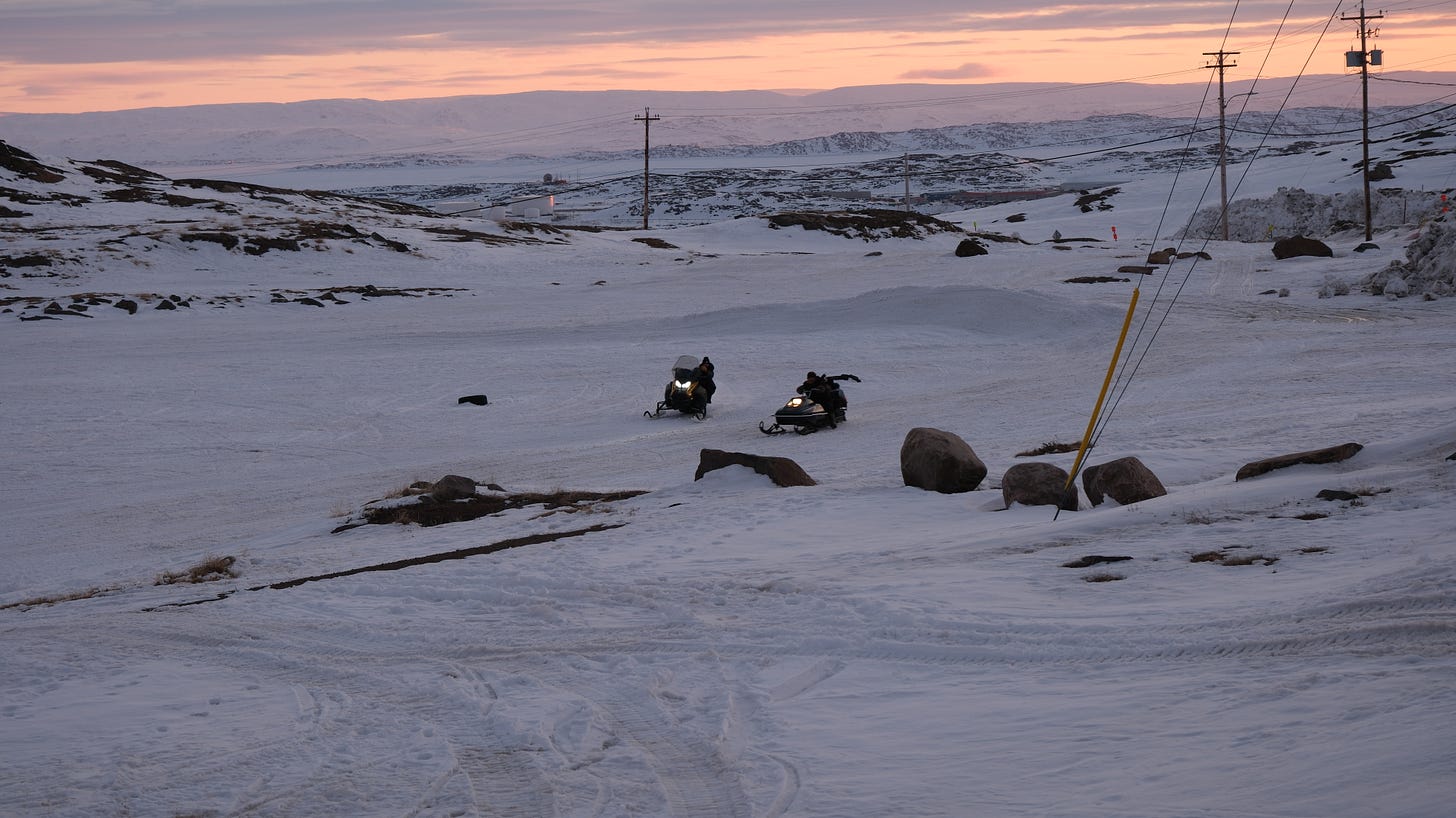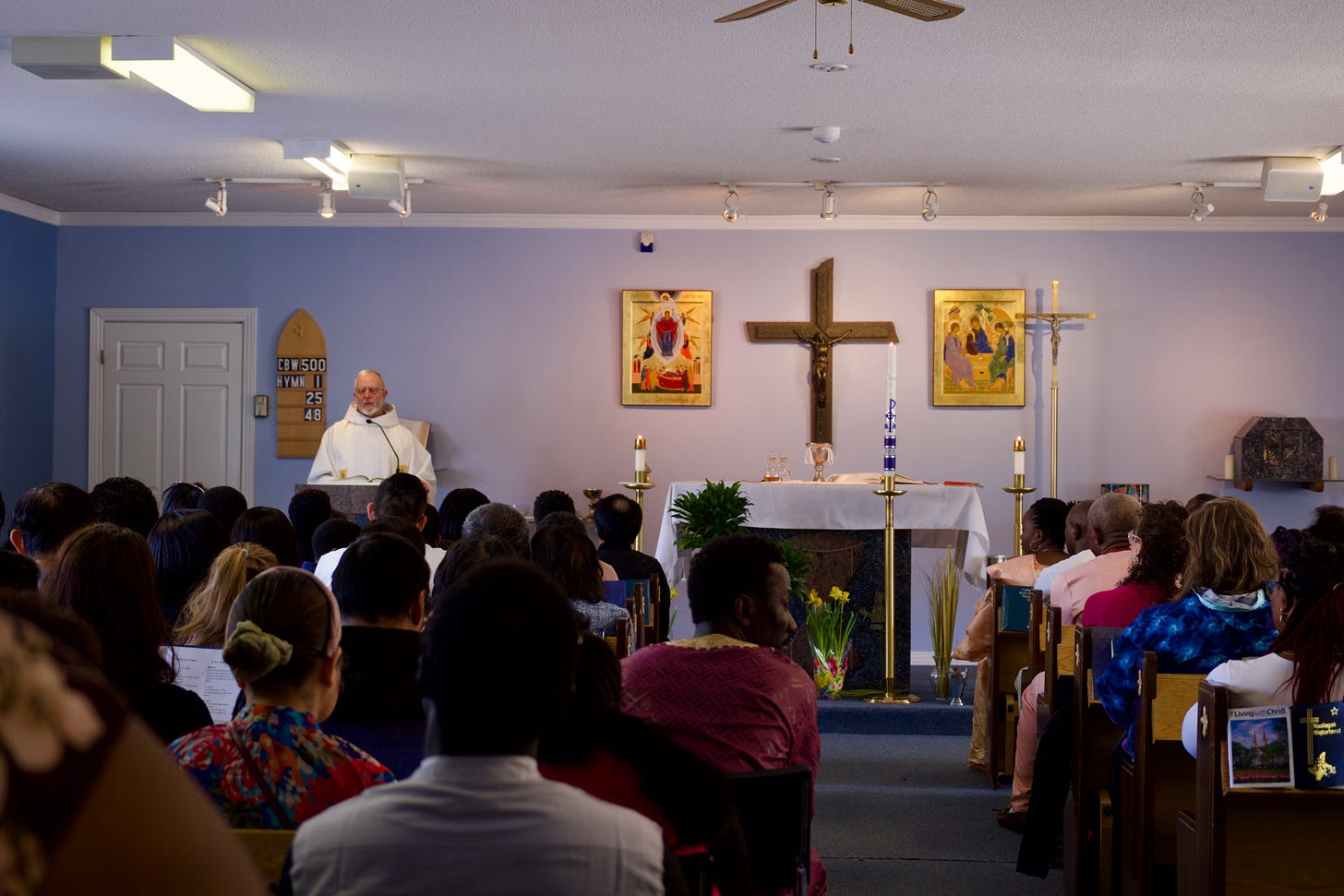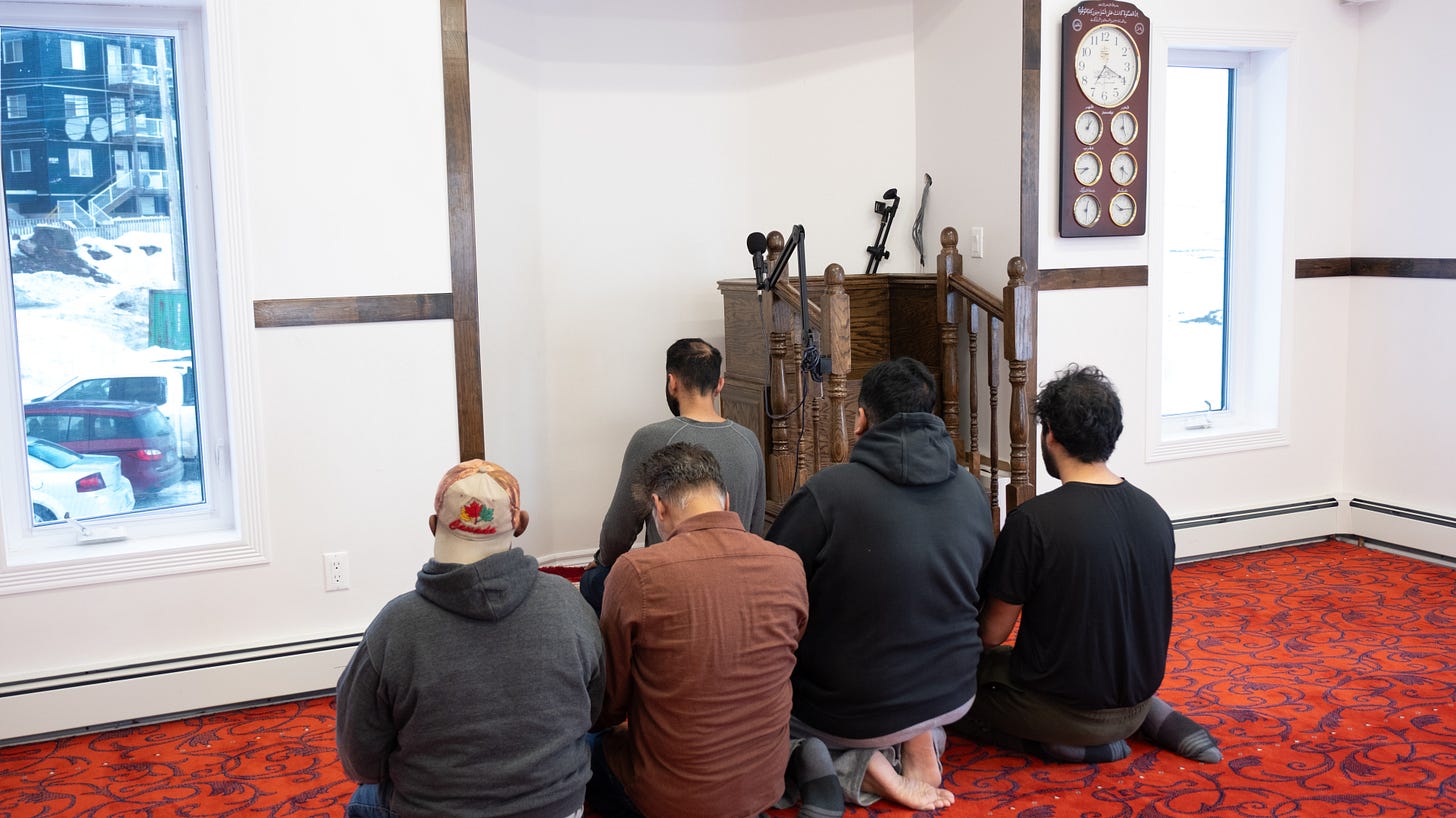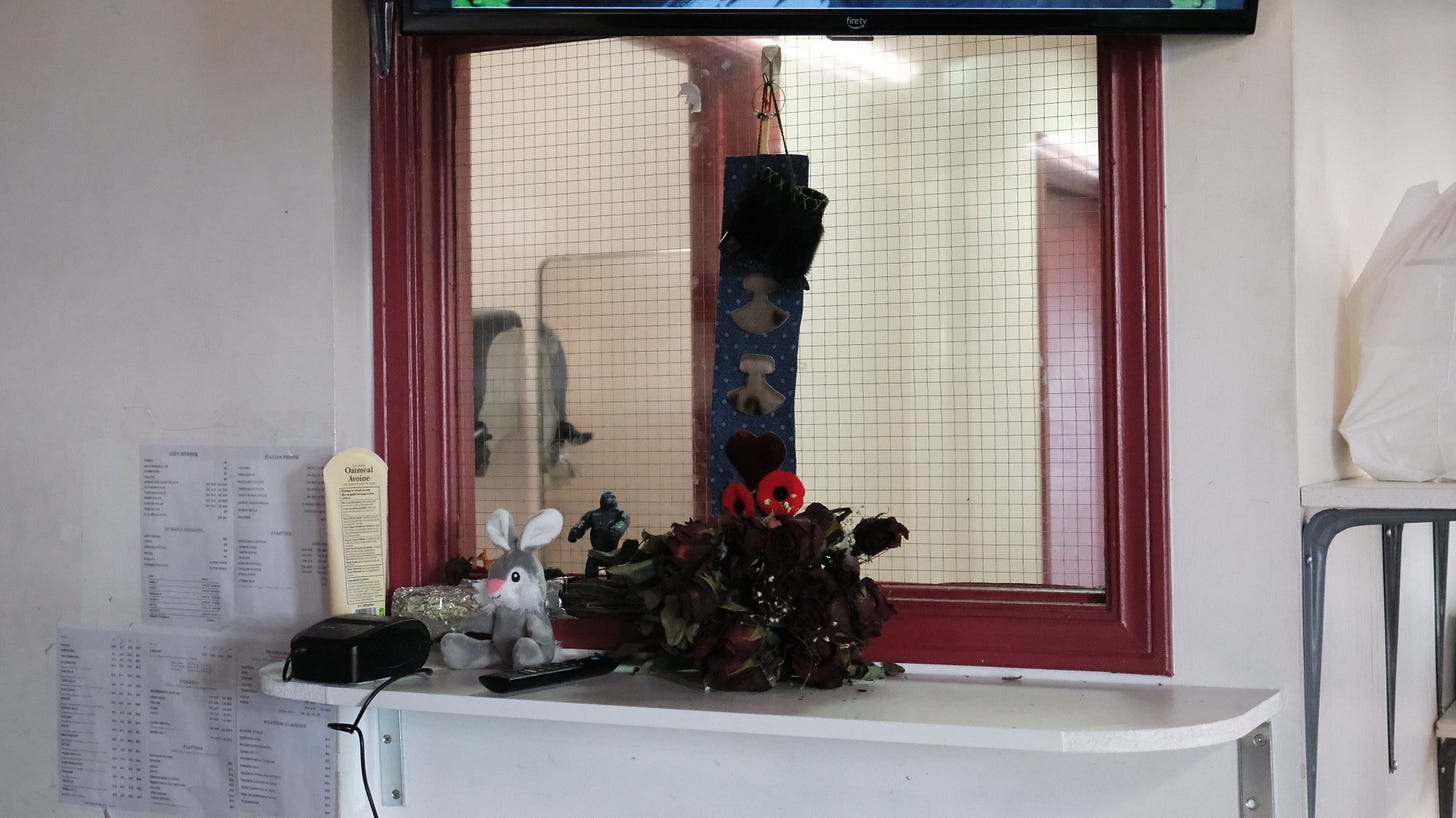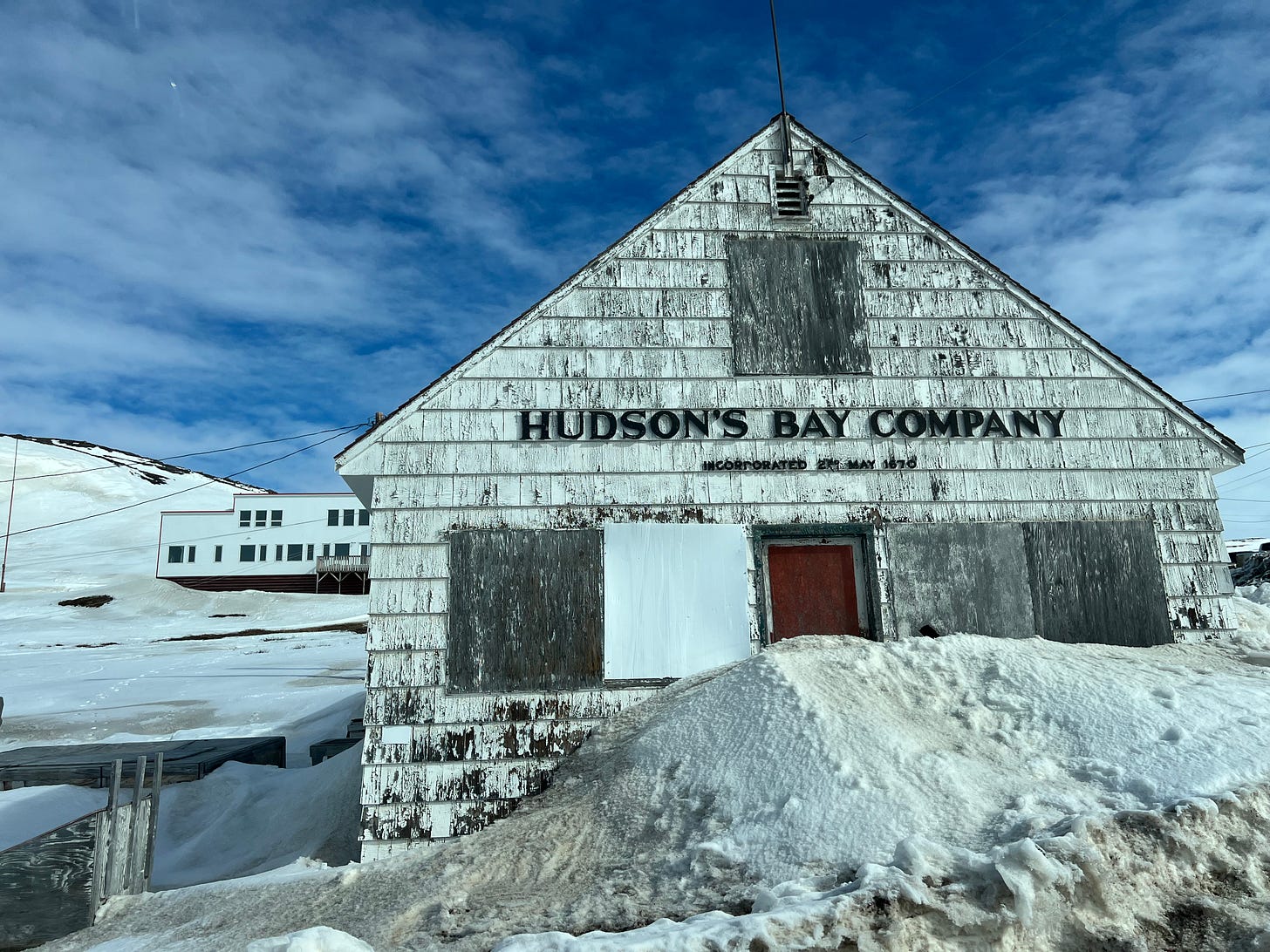‘A land so white and savage’
I went to the Canadian Arctic and found the world.
“Oh for just one time, I would take the Northwest Passage,
To find the hand of Franklin1 reaching for the Beaufort Sea,
Tracing one warm line through a land so white and savage,
And make a Northwest Passage to the sea.”
Stan Rogers, “Northwest Passage,” the unofficial anthem of Canada
My feature article on Iqaluit, the capital of the Canadian Arctic, has finally been published at Reason Magazine. It focuses not on the native Inuit or the white Canadians who settled there, but more recent immigrant communities who have come to work in the Arctic mining and defense boom. Iqaluit is truly a global city, with residents from surprising and far-flung parts of the world, including and especially tropical regions.
My trip came during Easter weekend, which also happened to overlap with the spring festival of Toonik Tyme, a sort of Inuit version of Nowruz. I got a chance to spend time with both the Muslim and Catholic communities, both of which are made almost entirely of non-white immigrants, though there were Inuit converts to both religions.
It’s cliche to say, but I felt incredible hospitality and warmth from the people I visited. Everyone there was “a stranger in a strange land,”2 so to speak. Father Barry at the church was quite patient and generous with his time, and everyone at mosque made sure I was taken care of, driving me around town and feeding me at the weekly potluck.
Immigration to the Arctic comes with many of the same anxieties and tensions as immigration everywhere. It’s particularly acute because Inuit are already a tiny, threatened minority culture within Canada, so a small number of immigrants has a big impact. There was a complicated interplay between Inuit, white Canadians, and non-white newcomers that I almost certainly did not get a chance to fully explore.
At the same time, the conditions of the Arctic seem to serve as a buffer. Most people who come for work don’t want to stay, and those who do stay are those who really want to find a place in the community. At the dogsled race, a white government employee sheepishly insisted to me that she didn’t speak Inuktitut, then rattled off different words and even the differences between dialects in (what sounded to me like) a perfect accent.
A perfect symbol of Iqaluit’s cultural synthesis, I think, is Yummy Shawarma. Run by Lebanese immigrants, and decorated with a combination of Arab and Inuit aesthetics, it’s the main fast food joint in town. (I’m told that former Prime Minister Justin Trudeau and opposition leader Pierre Poilievre both ate there, though neither office responded to my questions about it.) When I visited, the owner had a great rapport with his regular customers, and told me he had even learned to speak a “little” Inuktitut.
A potentially more pernicious dynamic is the feeling of economic exploitation. While migrants who come and go quickly may not threaten the local culture, they do soak up resources. To be frank, a lot of Inuit resent that the investment in their region is going to outsiders who don’t even like living there, and many immigrants feel that they’re doing work Inuit aren’t capable of or interested in doing to develop the region. The old colonial dynamic rears its ugly head again.
One last note: the article was written in the shadow of the Trump administration’s threats to annex Greenland, and Silicon Valley’s interest in building high-tech colonies there. Developing the “Arctic passageways, and Arctic naval routes, and indeed in the minerals of the Arctic territories,” in Vice President J.D. Vance’s words, is going to create a huge demand for labor, attracting immigration in the same way Iqaluit has.
Any future American Arctic settlement will probably look a lot like Iqaluit, a fundamentally Inuit town peppered with different immigrant cultures. It will not look like the Hyperborean Übermensch fortress of Silicon Valley’s fantasies, because upper-middle-class Americans are probably the least likely group to want to live and work at higher latitudes than Alaska.
Anyways, I highly recommend reading the article itself. And that won’t be the ending of my writing on Iqaluit and the Arctic. Even though my trip was only for a few days, I learned and thought about a lot more than can be contained in a 2,000 word article.
Captain John Franklin, an explorer who led a doomed expedition to the Arctic in 1845. The mythology around him is hugely important in Canadian national memory.
Exodus 2:22



